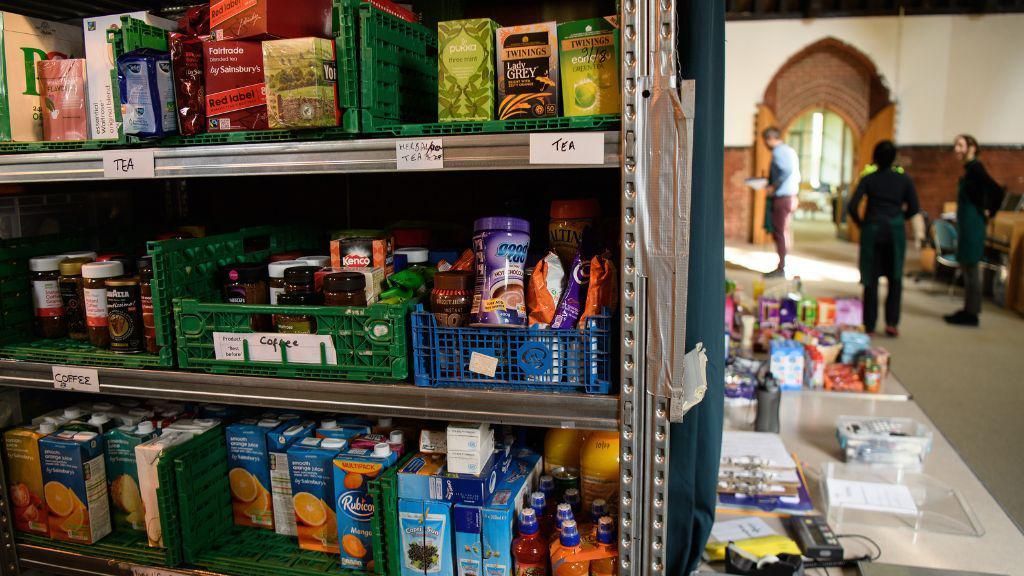 Getty Images
Getty ImagesAt a glance
-
Food banks in Brighton and Hove face an uncertain future, a report has revealed.
-
Emergency food providers in the city cited a rise in demand amid the cost of living crisis
-
The Brighton and Hove Food Partnership said its current level of expenditure was “unsustainable”
-
31 minutes ago
Food banks in Brighton and Hove face an uncertain future due to a rise in demand amid the cost of living crisis, a report has revealed.
An annual survey of the city’s Emergency Food Network (EFN), which includes 51 providers, found food banks were spending £15,800 a week to stock up on supplies – an increase of 59% from 2022.
The Brighton and Hove Food Partnership (BHFP) said its current level of expenditure was “unsustainable”.
“Food poverty in Brighton is becoming the new normal and that is simply unacceptable,” a BHFP spokeswoman said.
About 6,441 people in Brighton and Hove rely on emergency food services every week, a rise of 25% from 2022, according to the report.
Nearly a third of those recipients are children.
‘Take action now’
The report also stated that nearly half the city’s food banks had warned they had insufficient funds for next year.
“Some food banks are already having to pause new referrals or reduce the amount of food they can offer,” it said.
Vanessa O’Shea, BHFP’s community food team manager, called on national and local governments, employers and educational bodies to “wake up, face their responsibilities and take action now”.
There are 51 food banks, community meal providers, affordable food projects under the Emergency Food Network in Brighton and Hove.
The survey found that 23 suppliers were using financial reserves, while cooking oil, meat, eggs and fresh fruit and vegetables were ingredients in high demand.
Follow BBC South East on Facebook, on X, and on Instagram. Send your story ideas to [email protected].
Related Topics
- Hove
- Brighton
- Food banks
- Cost of living
